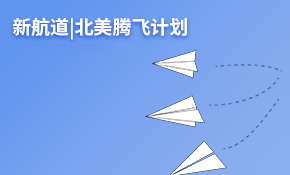托福听力:TPO3Conversation+Lecture听力文本
托福听力备考不仅需要有一定的词汇量,另外对于听音辨音能力也有要求。备考托福的同学都知道TPO的使用对于托福考试的重要性,今天南京新航道学校为大家带来了托福听力:TPO3Conversation+Lecture听力文本,大家根据这些内容练习听力。
Narrator : Listen to a conversation between a student and a receptionist at the Registrar's Office on the first day of the semester.
TPO 3 Conversation 1
Student : Excuse me, I'm supposed to be having my physics class in the science building, but no one's in the classroom. Could you tell me where the class is? Physics 403 - has it been moved?
Receptionist : Well, there's a room assignment sheet on the bulletin board outside this office.
Student : Yeah, I know, but my class isn't listed there. There must be some kind of mistake or something. Could you look it up, please?
Receptionist : Hmmm... ok, let me check on the computer. It's physics, right? Wait, did you say physics 403?
Student : Yeah.
Receptionist : Er…I'm sorry, but it says here that it was cancelled. You should have got note letter from the registrar's office about this.
Student : What? I've never got it.
Receptionist : Are you sure? 'Cause it says on the computer that the letter was sent out to students a week ago.
Student : Really? I should have got it by now. I wonder if I threw it away with all the junk mail by mistake.
Receptionist : Well, it does happen. Er… let me check something. What's your name?
Student : Woodhouse, Laura Woodhouse.
Receptionist : Ok, hmmm…Woodhouse, let me see… ah, it says here we sent it to your apartment on er… Center Street.
Student : Oh, that's my old apartment. I moved out of there a little while ago.
Receptionist : Well, and I suppose you haven't changed your mailing address at the administration office. Well that would explain it.
Student : Yeah, I guess that's it. But how can they cancel the class after offering it. If I'd known this was going to happen, I would have taken it last semester.
Receptionist : I know, it's really inconvenient for you, I understand that, but er… if we don't have enough students sign up for the course, the college can't offer it. You know, it's a practical issue, like we can't have an instructor when there're only a few students in the class. You see what I mean?
Student : I guess, but now I don't know what course I should take instead.
Receptionist : Ok, let's see. Do you have any courses you're going to take next semester? If you do, you might want to take them now and sign up for physics 403 next semester.
Student : Yeah, I guess I could do that. I just hope it won't be cancelled again. Do you know how many people have to be enrolled in order to keep a class from being cancelled?
Receptionist : Well, it depends on the class, but for that class, you have to have er… let's see, usually it'd be at least ten people, but since it was cancelled this semester, they might even do it with less. But do you know what you should do? Give the physics department a call a couple of weeks before the semester starts. They'll be able to tell you if they're planning to go through with it. It's their decision, actually.
Student : Oh, ok, I will do that. Thanks for the info.
Receptionist : No problem. Sorry about the class. Oh, why aren't you to go change a mail address now. It lonely takes a minute.
Student : Oh, oh, sure, I will do that right way.
Narrator : Listen to part of a lecture in an environmental science class.
Professor : Now, we've been talking about the loss of animal habitat from housing developments, uh …, growing cities - small habitat losses. But today I wanna begin talking about what happens when habitat is reduced across a large area. There are, of course, animal species that require large areas of habitat, and some migrate over very long distances. So what's the impact of habitat loss on those animals - animals that need large areas of habitat? Well, I'll use the humming birds as an example. Now you know a humming bird is amazingly small, but even though it's really tiny, it migrates over very long distances, travels up and down the western hemisphere - the Americas, back and forth between where it breeds in the summer and the warmer climates where it's spent the winter. So you would say that this whole area over which it migrates is its habitat because on this long-distance journey, it needs to come down to feed and sleep every so often, right? Well, the humming bird beats its wings - get this - about 3 thousand times per minute. So you think, wow, it must need a lot of energy, a lot of food, right? Well, it does. It drinks a lot of nectar from flowers and feeds on some insects, but it's energy efficient too. You can't say it isn't. I mean, as it flies all the way across the Mexico Gulf, it uses up none of its body fat. But that doesn't mean it doesn't need to eat. So humming birds have to rely on plants in their natural habitat. And it goes without saying, but the opposite is true as well, plants depend on humming birds too. There are some flowers that can only be pollinated by the humming birds. Without its stopping to feed and spread pollen from flower to flower, these plants would cease to exist. But the problem, well, as natural habitat along these migration routes is developed by humans for housing or agriculture or cleared for raising cattle, for instance, there is less food available for migrating humming birds. Their nesting sites are affected too, the same by the same sorts of human activities. And all of these activities pose a real threat to the humming bird population. So help them survive, we need to preserve their habitats. And one of the concrete ways people have been doing this is by cleaning up polluted habitat areas and then replanting flowers, um, replanting native flowers that humming birds feed on. Promoting ecological tourism is another way to help save their habitat. As the number of visitors, eco-tourists who come to humming bird habitats to watch the birds, the more the number of visitors grows, the more local businesses' profit, so ecological tourism can bring financial rewards, all the more reason to value these beautiful little creatures in their habitat, right? But to understand more about how to protect them to support the humming birds the best we can, we've got to learn more about their breeding, nesting sites and migration routes, and also about the natural habitats we find there. That just helps us determine how to prevent further decline in the population. A good research method, a good way to learn more, is by running a banding study. Banding the birds allows us to track them over their lifetime. It's been a practice that's been used by researchers for years. In fact, most of what we've known about humming birds comes from banding studies, where we capture a humming bird and make sure all the information about it, like its weight and age and length, are all recorded and put into an international information database. And then we place an extremely lightweight band on one of its legs, well, what looks like a leg, although technically it's considered part of the bird's foot. Anyway, these bands are perfectly safe, and some humming birds have worn them for years with no evidence of any problems. The band is labeled with tracking number, oh, and there is a phone number on the band for people to call for free, to report a banded bird to be found or recaptured. So when a banded bird is recaptured and reported, we learn about its migration route, its growth, and how long it has been alive, its lifespan. One recaptured bird was banded almost 12 years earlier - she was one of the oldest humming birds on record. Another interesting thing we learned is that some humming birds no longer use a certain route. They travel by a different route to reach their destination. And findings like these have been of interest to biologists and environmental scientists in a number of countries who are trying to understand the complexities of how changes in a habitat affect the species in it.
Narrator : Listen to part of a lecture in a film history class.
Professor : Okay, we've been discussing films in the 1920s and 30s, and how back then film categories, as we know them today, had not yet been established. We said that by today's standards, many of the films of the 20s and 30s would be considered hybrids, that is, a mixture of styles that wouldn't exactly fit into any of today's categories, and in that context. Today we are going to talk about a film-maker who began making very unique films in the late 1920s. He was French, and his name was Jean Painlevé. Jean Painlevé was born in 1902. He made his first film in 1928. Now in a way, Painlevé's films conform to norms of the 20s and 30s, that is, they don't fit very neatly into the categories we use to classify films today. That said, even by the standards of the 20s and 30s, Painlevé's films were unique, a hybrid of styles. He had a special way of fusing, or some people might say confusing, science and fiction. His films begin with facts, but then they become more and more fictional. They gradually add more and more fictional elements. In fact, Painlevé was known for saying that science is fiction. Painlevé was a pioneer in underwater film-making, and a lot of his short films focused on the aquatic animal world. He liked to show small underwater creatures, displaying what seemed like familiar human characteristics - what we think of as unique to humans. He might take a clip of a mollusk going up and down in the water and set it to music. You know, to make it look like the mollusk were dancing to the music like a human being - that sort of thing. But then he suddenly changed the image or narration to remind us how different the animals are, how unlike humans. He confused his audience in the way he portrayed the animals he filmed, mixing up on notions of the categories of humans and animals. The films make us a little uncomfortable at times because we are uncertain about what we are seeing. It gives him films an uncanny feature: the familiar made unfamiliar, the normal made suspicious. He liked twists, he liked the unusual. In fact, one of his favorite sea animals was the seahorse because with seahorses, it's the male that carries the eggs, and he thought that was great. His first and most celebrated underwater film is about the seahorse. Susan, you have a question?
Student 1 : But underwater film-making wasn't that unusual, was it? I mean, weren't there other people making movies underwater?
Professor : Well, actually, it was pretty rare at that time. I mean, we are talking about the early 1920s
Student 1 : But what about Jacques Cousteau? Was he like an innovator, you know, with underwater photography too?
Professor : Ah, Jacques Cousteau. Well, Painlevé and Cousteau did both film underwater, and they were both innovators, so you are right in that sense. But that's pretty much where the similarities end. First of all, Painlevé was about 20 years ahead of Cousteau. And Cousteau's adventures were high-tech, with lots of fancy equipment, whereas Painlevé kind of patched the equipment together as he needed it. Cousteau usually filmed large animals, usually in the open sea, whereas Painlevé generally filmed smaller animals, and he liked to film in shallow water. Uh, what else, oh well, the main difference was that Cousteau simply investigated and presented the facts - he didn't mix in fiction. He was a strict documentarist. He set the standard really for the nature documentary. Painlevé, on the other hand, as we said before, mixed in elements of fiction. And his films are much more artistic, incorporating music as an important element. John, you have a question?
Student 2 : Well, maybe I shouldn't be asking this, but if Painlevé's films are so special, so good, why haven't we ever heard of them? I mean, everyone's heard of Jacques Cousteau.
Professor : Well, that's a fair question. Uh, the short answer is that Painlevé's style just never caught on with the public. I mean, it probably goes back at least in part to where we mentioned earlier, that people didn't know what to make of his films - they were confused by them, whereas Cousteau's documentaries were very straightforward, met people's expectations more than Painlevé's films did. But you are true: film history is about what we know about them. And Painlevé is still highly respected in many circles.
Narrator : Listen to a conversation between a student and a professor.
Student : Hi, Professor Archure, you know how in class last week you said you were looking for students who are interested in volunteering for your archeology project?
Professor : Of course, are you volunteering?
Student : Yes, I am. It sounds really interesting, but er… do I need to have any experience for these kinds of projects?
Professor : No, not really. I assume that most students taking the introductory level of class would have little or no experience with the archeological research, but that's ok.
Student : Oh, good, that's a relief. Actually, that's why I'm volunteering for the project - to get experience. What kind of work is it?
Professor : Well, as you know, we're studying the history of the campus this semester. This used to be an agricultural area and we already know that where the main lecture hall now stands, there once were farm house and barn that were erected in the late 1700s. We are excavating near the lecture hall to see what types of artifacts we find, you know, things people used in the past that got buried when the campus was constructed. We've already began to find some very interesting items like old bottles, buttons, pieces of clay pottery.
Student : Buttons and clay pottery? Did the old owners leave in such a hurry that they left their clothes and dishes behind?
Professor : Hmmm… that's just one of the questions we hope to answer with this project.
Student : Wow, and it's all right here on campus.
Professor : That's right, no traveling involved. I wouldn't expect volunteers to travel to a site, especially in the middle of the semester. We expect to find many more things, but we do need more people to help.
Student : So… how many student volunteers are you looking for?
Professor : I'm hoping to get five or six. I've asked for volunteers in all of the classes I teach, but no one has responded. You are the first person to express interest.
Student : Sounds like it could be a lot of work. Is there er… is there any way I can use the experience to get some extra credit in class? I mean, can I write a paper about it?
Professor : I think it'll depend on what type of work you do in the excavation, but I imagine we can arrange something. Actually I've been considering offering extra credit for class because I've been having a tough time getting volunteers. Extra credit is always a good incentive for students.
Student : And how often would you want the volunteers to work?
Professor : We're asking for three or four hours per week, depending on your schedule. A senior researcher, I think you know John Franklin, my assistant, is on site every day.
Student : Sure, I know John. By the way, will there be some sort of training?
Professor : Yes, er… I want to wait still Friday to see how many students volunteer, and then I'll schedule the training class next week at a time that's convenient for everyone.
Student : Ok. I'll wait to hear from you. Thanks a lot for accepting me.
Narrator : Listen to part of a lecture in an Art History class. The professor has been discussing the origins of art.
Professor : Some of the world's oldest preserved art is the cave art of Europe, most of it in Spain and France. And the earliest cave paintings found to date are those of the Chauvet Cave in France discovered in 1994. And you know, I remember when I heard about the results of the dating of the Chauvet paintings, I said to my wife, "Can you believe these paintings are over 30,000 years old?" And my 3-yearold daughter piped up and said, "Is that older than my great-grandmother?" That was the oldest age she knew. And you know, come to think of it. It's pretty hard for me to really understand how long 30,000 years is too. I mean, we tend to think that people who lived at that time must have been pretty primitive. But I'm gonna show you some slides in a few minutes and I think you will agree with me that this art is anything but primitive. They are masterpieces. And they look so real, so alive that it's very hard to imagine that they are so very old. Now, not everyone agrees on exactly how old. A number of the Chauvet paintings have been dated by a lab to 30,000 or more years ago. That would make them not just older than any other cave art, but about twice as old as the art in the caves at Altamira or Lascaux, which you may have heard of. Some people find it hard to believe Chauvet is so much older than Altamira and Lascaux, and they noted that only one lab did the dating for Chauvet, without independent confirmation from any other lab. But be that as it may, whatever the exact date, whether it's 15,000, 20,000 or 30,000 years ago, the Chauvet paintings are from the dawn of art. So they are a good place to start our discussion of cave painting. Now, one thing you've got to remember is the context of these paintings. Paleolithic humans - that's the period we are talking about here, the Paleolithic, the early stone age, not too long after humans first arrived in Europe - the climate was significantly colder then and so rock shelters, shallow caves were valued as homes protected from the wind and rain. And in some cases at least, artists drew on the walls of their homes. But many of the truly great cave art sites like Chauvet were never inhabited. These paintings were made deep inside a dark cave, where no natural light can penetrate. There's no evidence of people ever living here. Cave bears, yes, but not humans. You would have had to make a special trip into the cave to make the paintings, and a special trip to go see it. And each time you'd have to bring along torches to light your way. And people did go see the art. There are charcoal marks from their torches on the cave walls clearly dating from thousands of years after the paintings were made. So we can tell people went there. They came but they didn't stay. Deep inside a cave like that is not really a place you'd want to stay, so, why? What inspired the Paleolithic artists to make such beautiful art in such inaccessible places? We'll never really know of course, though it's interesting to speculate. But, um, getting to the paintings themselves, virtually all Paleolithic cave art represents animals, and Chauvet is no exception. The artists were highly skilled at using, or even enhancing, the natural shape of the cave walls to give depth and perspectives to their drawings, the sense of motion and vitality in these animals. Well, wait till I show you the slides. Anyway, most Paleolithic cave art depicts large herbivores. Horses are most common overall with deer and bison pretty common too, probably animals they hunted. But earlier at Chauvet, there is a significant interest in large dangerous animals, lots of rhinoceros, lions, mammoth, bears. Remember that the ranges of many animal species were different back then so all these animals actually lived in the region at that time. But the Chauvet artists didn't paint people. There is a half-man-half-bison creature and there is outline of human hands but no depiction of a full human. So, why these precise animals? Why not birds, fish, snakes? Was it for their religion, magic or sheer beauty? We don't know. But whatever it was, it was worth it to them to spend hours deep inside a cave with just a torch between them and utter darkness. So, on that note, let's dim the lights, so we can see these slides and actually look at the techniques they used.
Narrator : Listen to part of a lecture in an astronomy class.
Professor : Now astronomy didn't really bloom into the science it is today until the development of spectroscopy. Spectroscopy is basically the study of spectra and spectral lines of light, and specifically for us, the light from stars. It makes it possible to analyze the light emitted from stars. When you analyze this light, you can figure out their distance from the earth, and identify what they are made of, determine their chemical composition. Before we get into that though, it's probably a good thing to back up a bit. You all know how when you take a crystal prism and pass a beam of sunlight through it, you get a spectrum, which looks like a continuous band of rainbow colors. The light that we see with our human eyes as a band of rainbow color falls in a range of what's called visible light. And visible light spectroscopy is probably the most important kind of spectroscopy. Anyone want to take a stab at the scientific term for visible light? And I'm sure all of you know this because you all did the reading for today.
Student : Optical radiation. But I thought being exposed to radiation is dangerous.
Professor : Yes, and no. If you are talking about radiation, like in the element Uranium, yeah, that's dangerous. But radiation as a general term actually refers to anything that spreads away from its source. So optical radiation is just visible light energy spreading out. OK, so we've got a spectrum of a beam of sunlight and it looks like the colors bleed into each other. There are no interruptions, just a band flowing from violet to green, to yellow, to… you get the idea. Well, what happens if the sunlight's spectrum is magnified? Maybe you all didn't do the reading. Well, here's what you'd see. I want you to know this that this spectrum is interrupted by dark lines called spectral lines. If you really magnify the spectrum of the sunlight, you could identify more than 100,000 of them. They may look like kind of randomly placed, but they actually form many distinct patterns. And if you were looking at the spectrum of some other star, the colors would be the same. But the spectral lines would break it up at different places, making different patterns. Each pattern stands for a distinct chemical element, and so different sets or patterns of spectral lines mean that the star has a different chemical composition.
Student : So how do we know which spectral patterns match up with which elements?
Professor : Well, a kind of spectroscopic library of elements was compiled using flame tests. A known element, say a piece of iron for example, is heated in a pure gas flame. The iron eventually heats to the point that it radiates light. This light is passed through a prism, which breaks it up into a spectrum. And a unique pattern, kind of like a chemical fingerprint of spectral lines for that element appears. This process was repeated over and over again for many different elements, so we can figure out the chemical makeup of another star by comparing the spectral pattern it has to the pattern of the elements in the library. Oh, an interesting story about how one of the elements was discovered through spectroscopy. There was a pretty extensive library of spectral line patterns of elements even by the 1860s. A British astronomer was analyzing a spectrograph of sunlight, and he noticed a particular pattern of spectral lines that didn't match anything in the library. So he put two and two together, and decided there was an element in the sun that hadn't been discovered here on the earth yet. Any guesses about what that element is? It actually turned out to be pretty common and I'm sure all of you know it. OK. Let's try something else. Any of you happened to be familiar with the Greek word for "sun" by chance?
Student : Something like "Helius" or something like that. Oh it must be "Helium". So you are saying that elium was discovered on the sun first.
Professor : Yes, and this is a good example of how important spectroscopy is in astronomy.
南京新航道学校提供专业的雅思培训、托福培训、GRE培训、SAT培训、剑桥青少英语培训等,帮助广大学子“用英语点亮人生”。
新航道致力于帮助学生提高英语能力,决胜雅思、托福、SAT、GRE等出国考试,分享励志成长、英语学习、考试信息、留学动态,尊重英语学习!南京新航道官网微信号:xhd-nanjing.
新朋友关注方法:
1、添加微信号:xhd-nanjing
2、二维码关注:保存图片——打开微信扫一扫——从相册选择二维码(适用手机端)















